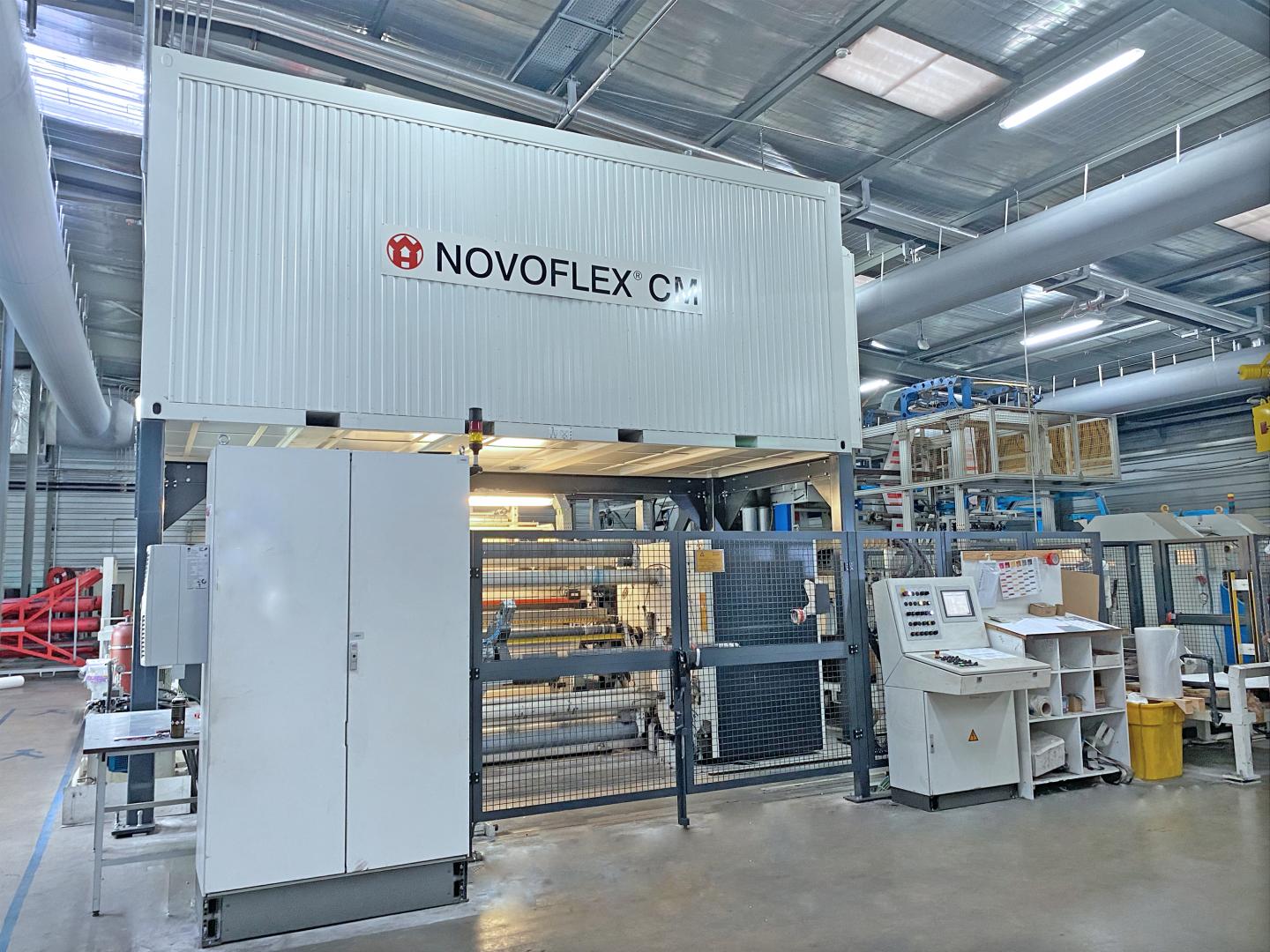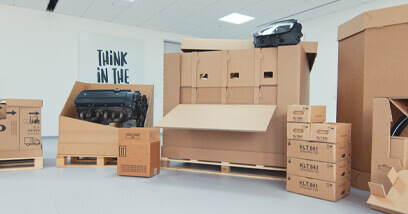Bulk Container Recycling Initiatives: Sustainably Browsing Industry
Bulk Container Recycling Initiatives: Sustainably Browsing Industry
Blog Article
Reliable Industrial Recycling Solutions for Sustainable Packaging: A Comprehensive Overview
In today's increasingly environmentally-conscious world, the need for sustainable product packaging options has actually never been greater. To meet this demand, services throughout sectors are actively seeking effective industrial recycling options. Nevertheless, browsing the complex landscape of sustainable packaging can be testing without an extensive overview. That's where this thorough overview on efficient commercial recycling options for lasting packaging can be found in. By exploring essential areas such as packaging material option, creating for recyclability, implementing reusing framework, teaming up with reusing partners, and tracking and measuring reusing success, this overview will equip you with the expertise and tools necessary to make enlightened choices and drive positive change within your company. Whether you're a packaging expert, sustainability supervisor, or just interested in the subject, this overview will supply useful insights and techniques to aid you browse the globe of sustainable packaging.
Packaging Material Choice
The option of packaging materials plays an important duty in ensuring the sustainability of commercial recycling solutions. When it pertains to lasting product packaging, the selection of materials is type in decreasing ecological influence and making the most of reusing effectiveness. Selecting the right materials can aid lower waste generation, save sources, and promote a round economic situation.
Materials like cardboard, paper, glass, and specific types of plastics can be reused numerous times without losing their top quality. On the other hand, products that are challenging to recycle, such as non-recyclable composites or blended plastics, can create challenges for the recycling procedure and may finish up in garbage dumps or burners.
One more factor to consider is using biodegradable and eco-friendly materials. Product packaging made from renewable energies, such as plant-based plastics or biopolymers, can help in reducing reliance on fossil fuels and minimize climate adjustment. Additionally, naturally degradable products damage down normally gradually, decreasing the buildup of waste in land fills.
Additionally, the weight and quantity of packaging products need to be minimized to decrease transport prices and energy usage. Light-weight materials not only need less resources during production however additionally add to lower carbon emissions throughout transportation.
Designing for Recyclability
In order to make certain the recyclability of product packaging products, thoughtful design is important. Designing for recyclability entails producing product packaging that can be conveniently arranged, divided, and refined in recycling centers. One vital facet of designing for recyclability is the choice of materials. Product packaging designers should prioritize the use of products that are commonly approved for recycling and have established recycling facilities. Materials such as glass, aluminum, and certain sorts of plastic, like animal and HDPE, are typically reused and ought to be chosen over products that are pricey or hard to reuse.
An additional critical consideration in designing for recyclability is the elimination of unneeded elements or products. By reducing the number of layers, finishes, and additional parts, packaging can be made simpler and much easier to recycle. Additionally, developers ought to aim to reduce the usage of mixed products, as they can complicate the recycling procedure.

Implementing Recycling Infrastructure
Effective execution of recycling facilities is important for the success of industrial recycling solutions. Without correct infrastructure in area, the reusing procedure ends up being ineffective and inadequate, impeding the overall objective of sustainable product packaging.
To apply recycling infrastructure efficiently, a number of crucial factors need to be thought about. There need to be a well-organized collection system that promotes the separation and collection of recyclable products. This can consist of designated recycling containers in public spaces, as well as partnerships with waste monitoring business for curbside pick-up and sorting.
Once gathered, the recyclable products require to be carried to reusing facilities in a timely way. This calls for efficient logistics and transportation networks, making certain that the products get to the ideal centers without hold-up.
At the reusing facilities, advanced sorting and handling technologies need to remain in place to divide various sorts of products effectively. This includes making use of automated arranging machines, optical scanners, and hands-on sorting methods.
Furthermore, there must be a robust market demand for recycled materials. This can be accomplished via cooperations with makers and sectors that use recycled materials in their manufacturing procedures. Creating a secure market for recycled products incentivizes the reusing market and promotes the circular economy.
Working Together With Recycling Allies

One trick aspect of collaborating with reusing companions is the establishment of clear interaction networks. It is vital to develop open lines of interaction to facilitate the exchange of info, updates, and feedback. This enables both parties to stay educated about the development of recycling campaigns and address any kind of challenges or issues that may emerge.
In addition, partnership can entail joint efforts in carrying out and creating recycling programs. Recycling partners can supply valuable insights and guidance in establishing efficient collection systems and figuring out one of the most appropriate recycling technologies. By interacting, companies and recycling partners can maximize the recycling procedure and lessen waste.
In addition, partnership can extend beyond the operational facets of recycling. It can also encompass advocacy and education campaigns. By signing up with forces, businesses you can try this out and recycling companions can elevate understanding regarding the significance of recycling and advertise the fostering of lasting packaging methods amongst visit here customers and other stakeholders.
Tracking and Measuring Recycling Success
To make sure the performance of commercial recycling solutions and the achievement of lasting product packaging objectives, it is vital for services and their reusing partners to develop a detailed system for monitoring and gauging reusing success (industrial metal packaging). Tracking and gauging reusing success permits organizations to assess the influence of their recycling efforts, recognize areas for improvement, and established significant targets for future progress
One means to track reusing success is via the use of data collection and evaluation tools. By collecting information on the amount of product packaging waste created, the percent of waste that is reused, and the sorts of products being reused, businesses can acquire useful understandings right into their recycling performance. This data can after that be assessed to recognize patterns, patterns, and locations of inefficiency.
An additional essential aspect of monitoring and determining reusing success is establishing clear and standard metrics. This allows companies to contrast their performance versus sector standards and track their progression over time. Metrics such as recycling rates, waste diversion rates, and greenhouse gas exhausts can give a quantitative measure of a company's reusing success.

Conclusion
In verdict, executing efficient industrial recycling remedies for sustainable product packaging calls for careful factor to consider of packaging product option, designing for recyclability, carrying out reusing facilities, working together with recycling companions, and tracking and measuring reusing success. By incorporating these techniques, companies can add to a more lasting and environmentally-friendly strategy to packaging, lowering waste and promoting the circular economy.
By exploring vital locations such as packaging product choice, designing for recyclability, applying recycling facilities, teaming up with recycling companions, and monitoring and gauging reusing success, this overview will certainly furnish you with the understanding and tools needed to make informed decisions and drive positive adjustment within your company. Product packaging designers should focus on the use of materials that are extensively approved for recycling and have developed reusing infrastructures.Partnership with reusing companions is crucial for the successful application of commercial reusing remedies and the achievement of lasting product packaging objectives. By joining forces, companies and recycling companions can elevate awareness about the value of reusing and advertise the fostering of lasting product packaging techniques amongst customers and other stakeholders.
By accumulating data on the quantity of packaging waste created, the percent of waste that is reused, and the kinds of products being reused, organizations can gain important insights into their recycling performance.
Report this page